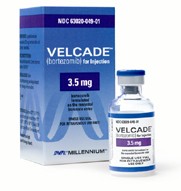Leave a Comment:
3 comments
[…] Elderly Myeloma -To Treat or To ASCT? – […]
Reply[…] The Elderly Multiple Myeloma Patient-To Treat or To ASCT? […]
Reply[…] The Elderly Multiple Myeloma Patient-To Treat or To ASCT? […]
Reply
Multiple Myeloma an incurable disease, but I have spent the last 25 years in remission using a blend of conventional oncology and evidence-based nutrition, supplementation, and lifestyle therapies from peer-reviewed studies that your oncologist probably hasn't told you about.
Click the orange button to the right to learn more about what you can start doing today.

In December of 1995, upon returning home to my condo from University Hospital post autologous stem cell transplant for my multiple myeloma I could barely climb the three flights of stairs to my front door. I was far from being an elderly multiple myeloma patient. I had just turned 36.
I’m paraphrasing when I say “ASCT’s are not for sissies.” The challenge for newly diagnosed MMers is that induction chemotherapy followed by ASCT is the standard-of-care. If you are a newly diagnosed MMer who is elderly please give serious consideration to the “cure versus control” debate in MM.
I am both a long-term MM survivor and MM cancer coach. Research and experience have taught me that while ASCT has a place in MM therapy, in general, this aggressive therapy is over-used.
Please consider evidence-based complementary, integrative and lifestyle therapies in addition to conventional FDA approved therapies. I believe that elderly multiple myeloma patients can enjoy longer overall survival in addition to greater quality of life by combining toxic with non-toxic MM therapies.
Thank you,
David Emerson
“Multiple Myeloma (MM) is a disease of the elderly: the median age at diagnosis is increasing along with the increase in life expectancy in the general population and is currently more than 70.[1] Age is an important prognostic factor in MM, and overall survival (OS) declines continuously by decade from age 50 to ages greater than 80.[1] This decline in OS may be explained in part by the higher incidence of more severe disease in older patients, but it is mainly explained by patient characteristics (eg, performance status, comorbidities).[1,2]
Elderly patients do not tolerate chemotherapy-related adverse events as well as younger patients, and they are rarely candidates for high-dose therapy (HDT) plus autologous stem cell transplantation (ASCT)—
Thus, the usual definition of an elderly Multiple Myeloma patient is one who is over 65 years of age…for four decades now there has been almost no improvement in the prognosis of elderly patients with MM…[4]
[…] Elderly Myeloma -To Treat or To ASCT? – […]
Reply[…] The Elderly Multiple Myeloma Patient-To Treat or To ASCT? […]
Reply[…] The Elderly Multiple Myeloma Patient-To Treat or To ASCT? […]
Reply